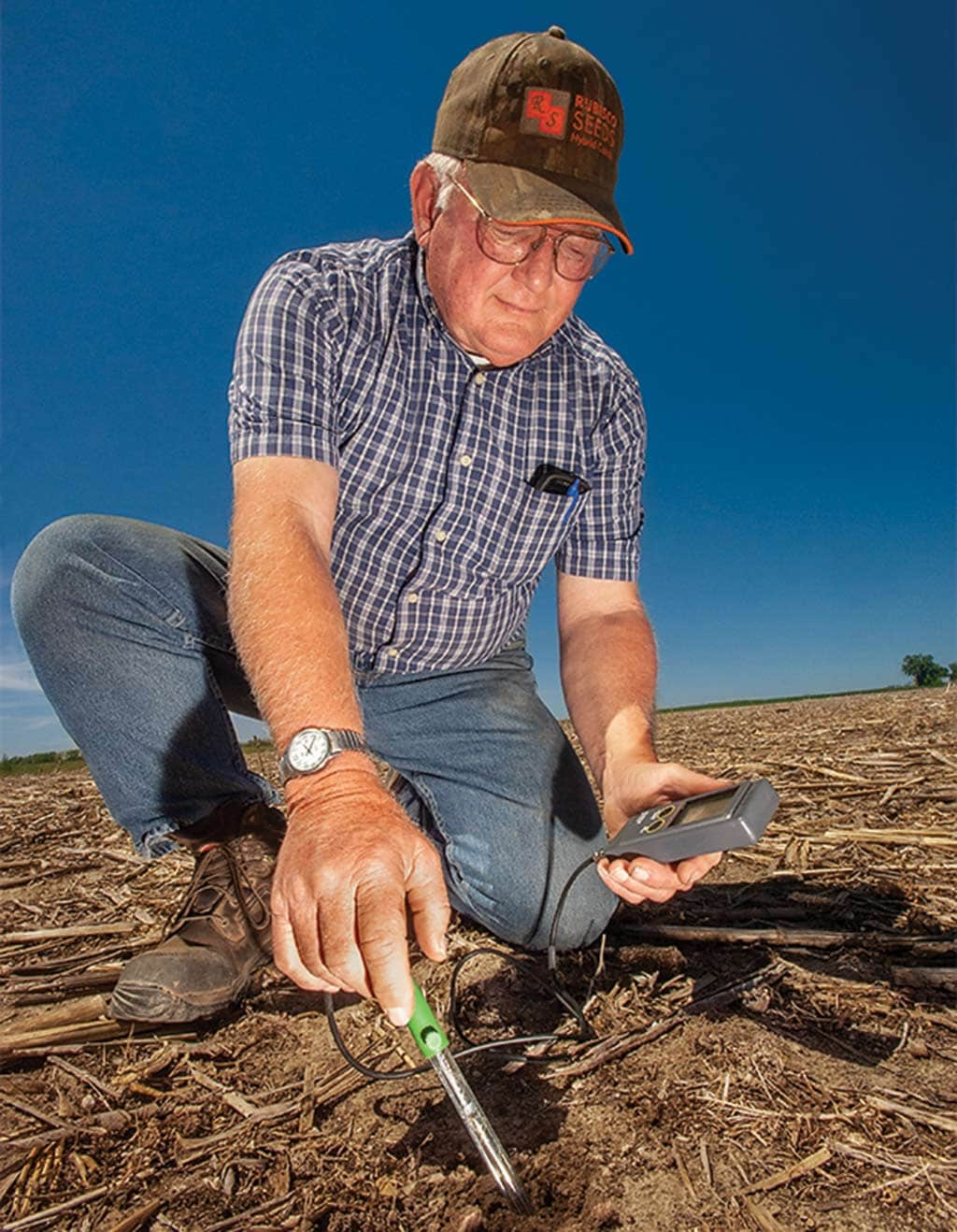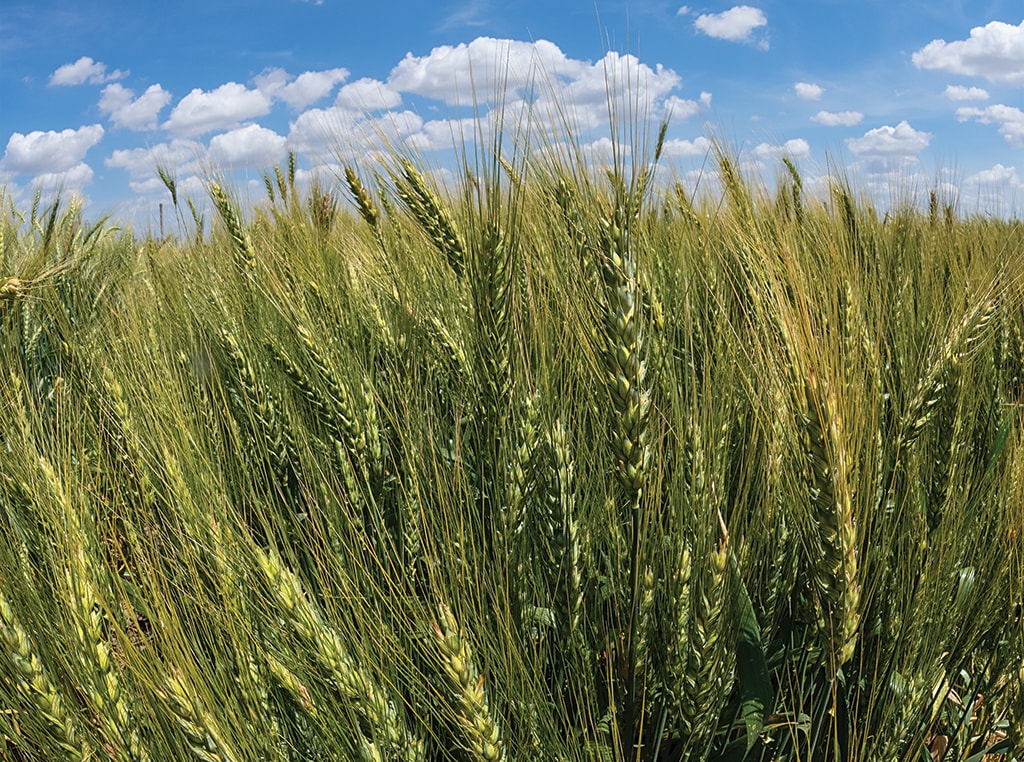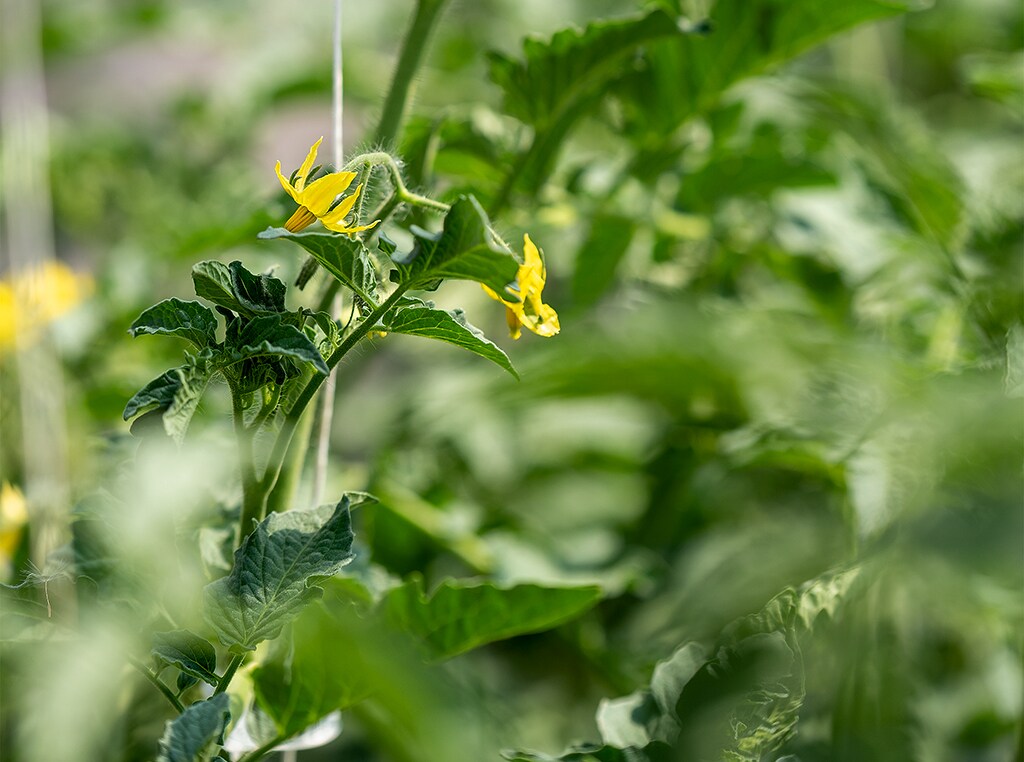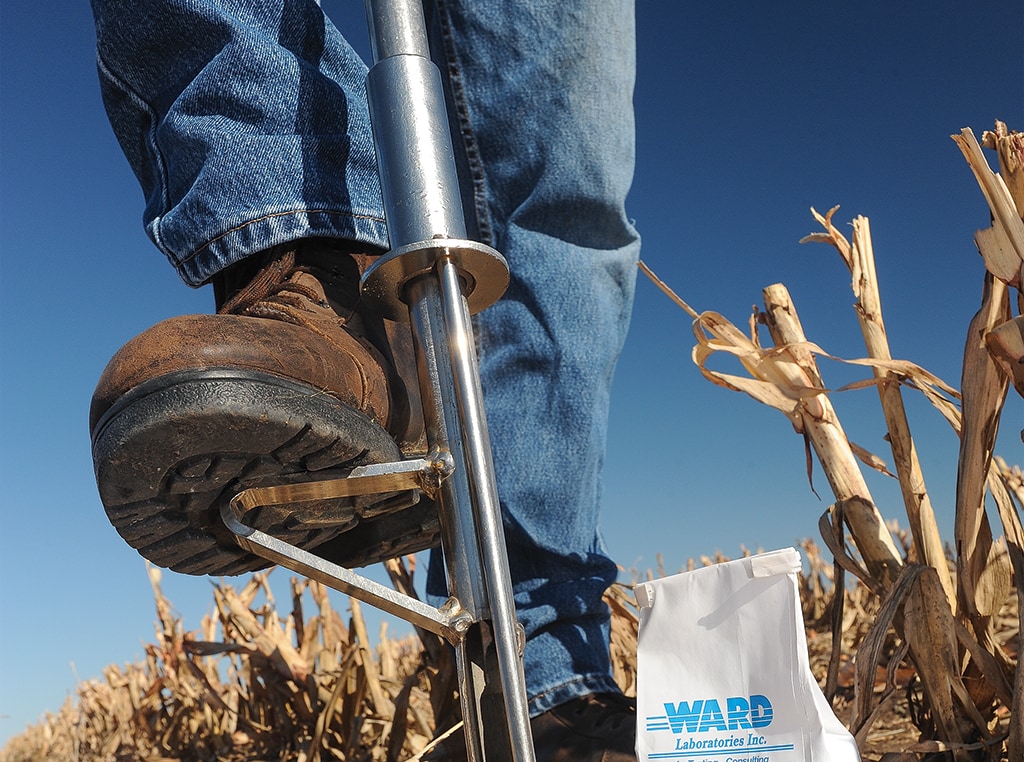Agriculture, Education November 01, 2021
Pinpoint Soil PH
Shallow sampling reveals no-till concerns.
Soil acidity problems may be hiding in plain sight in many longterm no-till fields. In the top few inches of soil—just below the layer of crop residue—soil pH (a measure of soil acidity) can be low enough to hinder crop growth, yet go undetected by traditional soil sampling methods that probe a six to eight inch depth.
“This stratification of the soil pH is caused by the surface application of ammonium-based nitrogen fertilizer,” says Brian Arnall, soil fertility expert at Oklahoma State University. “As that fertilizer is transformed into the nitrate form that plants can use, hydrogen ions are released. These add to the acidity level of the soil and reduce the soil pH level.”
Arnall explains that as the soil pH level falls below 5.5, the aluminum and manganese that are naturally present become soluble and damage crop roots, reducing their ability to take in many crop nutrients. The activity of soil microbes is also hindered and the performance and residual impact of many herbicides is affected.
“When this stratification exists, the standard zero-to-eight-inch soil sampling strategy is useless as a test for soil pH,” adds Arnall.

Richard Seck uses a handheld soil pH meter to test soil acidity in the top two inches of his fields.
A farmer’s eye. A struggling canola crop tipped Kansas farmers Richard and David Seck to the stratification problem. “Canola is very sensitive to soil acidity, but our soil tests—which were based on zero-to-ten-inch samples—showed pH levels were near the optimum level of 6.0. We had been no-tilling since 2004 and were aware of the stratification issue, so we bought a soil pH meter ($300) and checked at a two-inch depth at random spots in our fields. In 14 of the 15 fields we tested the soil pH level near the surface had fallen to nearly 5.0, which was dramatically lower than what our standard soil tests were showing,” says Richard.
Arnall did inch-by-inch soil sampling at three locations that had been in no-till for at least nine years. He found that soil pH levels ranged from 4.6 to 5.2 at the one-inch depth but increased steadily to a range of 5.6 to 6.2 at the six-inch depth.
“We think no-till growers that surface-apply nitrogen should submit soil samples from zero-to-three and three-to-six inch depths every five years to monitor this surface stratification,” says Arnall. ”This is in addition to the deeper sample used to monitor crop nutrients and other soil characteristics.”
Liming. Applying lime has long been the solution to soil acidity in areas where lime is available, but the practice traditionally uses tillage for incorporation—a tough pill for many no-tillers to swallow. However, there’s growing proof that surface applications of lime can be an acceptable solution.
Researchers at Kansas State University recently investigated surface-applied lime on two 25-year no-till fields whose pH levels had fallen to 5.0 at a two-inch depth. The three-year study in a wheat/corn/soybean rotation found wheat yields in year one were increased up to 8% with unincorporated lime. The next year’s corn yield increased as much as 10% while soybean yield increases averaged 6.5% the third year.
Ryan Buetow, North Dakota State University cropping systems specialist, is also concerned about soil pH stratification in longterm no-till fields in the northern Great Plains. “In western North Dakota and Montana growers have long been told they didn’t have to worry about soil acidity because soil pH levels were naturally high,” says Buetow.
“However, the use of high rates of nitrogen and no-till are creating pH problems near the surface and more farmers are realizing it as they become more site specific.” ‡
Read More

AGRICULTURE, EDUCATION
Heads Up For Hybrid Wheat
After decades of trying, hybrid wheat is again on the horizon.

AGRICULTURE, SPECIALTY/NICHE
Renewed Roots
Northern Minnesota beef and grain farmer renews passion through produce.

